
 |
|
Guide to Ports and Plugs (Keyboard and Mouse Interfaces)
There are several different types of plugs and ports that one should be familiar with when using a computer. Here is a summary of the all the interfaces you should need to be familiar with to connect your keyboard or mouse.
USB Ports
USB, or Universal Serial Bus, is the most common type of interface and has become the standard interface on all current computers, whether they are on a PC (i.e. Windows) or Mac (OS 9, OS X) platform. Most computers come with at least 4 USB ports built into the computer, and many of them have additional ports on the front of the computer (Front Side USB ports). If you run out of USB ports, you can purchase a USB Hub which plugs into one USB port, and gives you additional ports (i.e. like a power bar gives you multiple power outlets from a single wall outlet).
There are two types of USB ports which look physically identical; USB 1.1 and USB 2.0. USB 1.1 was the previous standard and is all you need for any keyboard or mousing device. Certain high speed devices like flash memory sticks or portable scanners will take advantage of USB 2.0's faster speed (almost 40x as fast) or increased power delivery capabilities. Your computer will advise you if a device would benefit from using a USB 2.0 port if you plug it into a USB 1.1 port. You will not harm your keyboard or mouse by plugging it into a USB 2.0 port.
| Finding the USB Port on your computer is easy. It is usually labelled with the letters USB if it is on the front of your computer case or the words 'Univeral Serial Bus'. |  |
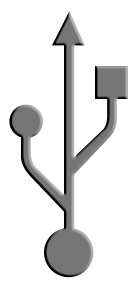 |
| If you are looking for USB ports on the back of your computer they usually are indicated by a symbol which looks like a cactus (shown at right). | ||
| A USB plug (what is at the end of the cable which is attached to your keyboard or mouse). | 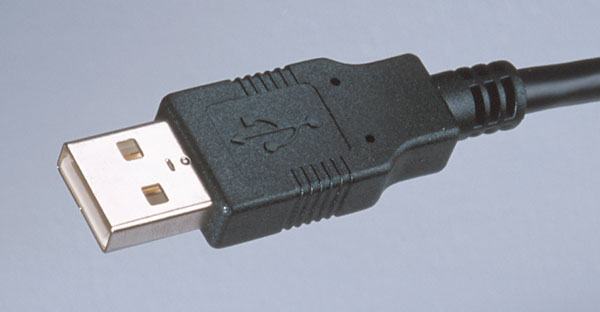 |
|
| A USB port (where you insert your plug into your computer). | 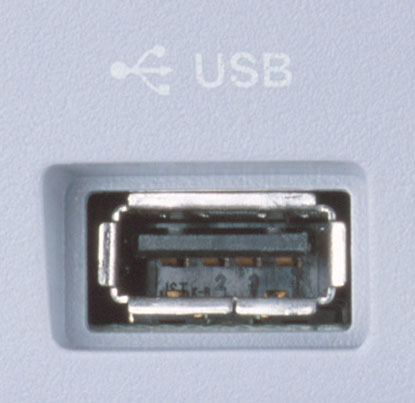 |
|
PS/2 Ports
PS/2 ports were the previous standard before USB for keyboards and mice. They were no faster than Serial ports (see below) but were primarily created to help users by assigning a different shape to the port used for your keyboard (and mouse). This new plug was created by IBM when they launched their PS/2 line of computers in 1987, and while their concept of proprietary hardware failed to survive, many of their design ideas (including the color coded PS/2 ports for mice and keyboards) eventually became the industry standard. The technical term for the PS/2 keyboard interface is a Mini-DIN 6 plug (which replaced the previous standard which was the DIN 5 plug, known as the AT connector). The Mini-DIN 6 plug for the mouse replaced the 9 pin Serial port connector (see below).
Most computers manufactured prior to 2006 came with 2 PS/2 ports, a purple one for the keyboard and a green one for the mouse. Computers built more recently typically no longer have PS/2 ports on them, although some manufacturers are still supporting this standard, as there is no loss of performance in using a PS/2 interface for keyboards and mice. If you need more than one PS/2 port (i.e. for 2 PS/2 keyboards), you have to purchase a PS/2 splitter or a KVM switch.
| A PS/2 plug (what is at the end of the cable which is attached to your keyboard (purple) or mouse (green)). |  |
| A PS/2 port (where you insert in your keyboard plug (purple) or mouse plug (green) into your computer). |  |
Serial Ports
Serial ports come in a wide range of sizes and shapes and were the original standard for interfacing any device with any other device on a computer. Today, they are rarely used and when one talks of a serial port, they usually mean the DB9 connector (shaped like a trapesoid). Typically they are only used on computers used in industrial environments or as a means of interfacing with an industrial control.
| A Serial plug (what is at the end of the cable which is attached to your mouse). | 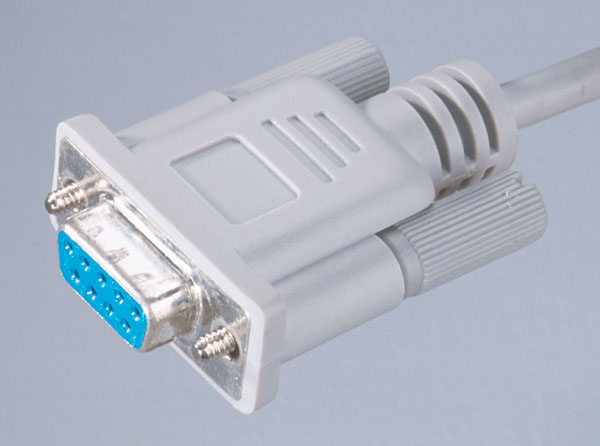 |
| A Serial port (where you insert in your mouse plug into your computer). | 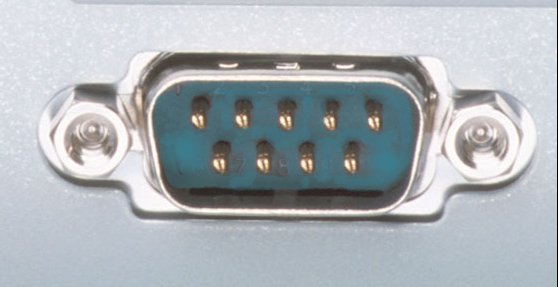 |
We hope this guide to ports and plugs has been informative and useful.
ErgoCanada.com's Guide to Ergonomics is a work in progress. If you have any comments on our existing content or additional material which we could add, please let us know!
We hope you found this general information helpful - for more specific information for your unique situation, we recommend getting an assessment by an ergonomic professional.
Please bookmark this site and check back often, as we are adding new products and services regularly.
Micwil Computer Consulting
Ergonomics Portal: ErgoCanada.com
P.O. Box 9022 Saskatoon, SK, Canada S7K 7E7
Phone: (306) 222-3203 Fax: (306) 382-4995
Toll-Free: (866) 335-3746 (ERGO)
Email: sales@ergocanada.com
Check out our other portals:
ExtremeGamingDevices.com
- Specialty gaming products for extreme gamers
ErgoLaptop.com - Ergonomic products
for laptop users.
BirdXCanada.com - Bird control
products
All materials copyright © 2006 Micwil Computer Consulting.